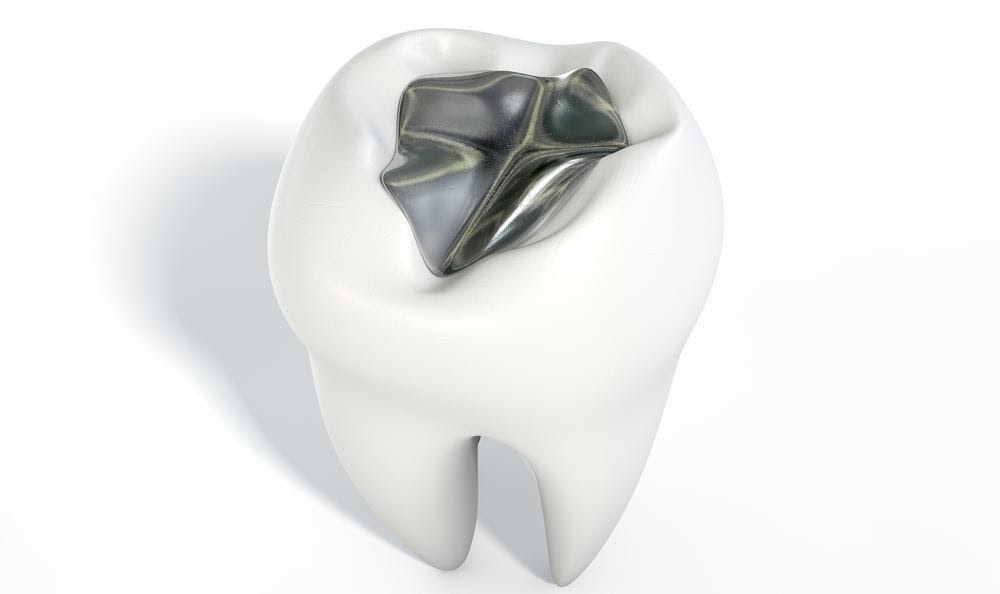Silver Fillings vs. White Fillings

After a dentist discovers dental decay, they may fill the removed area with a dental filling. Whether you require a new or replacement dental filling, it’s essential to consider your options. Dental fillings can be composed of several materials, but the two main types are amalgam (silver) and composite (white).
While the American Dental Association (ADA) currently approves of the use of both silver and white fillings, here are three factors to consider when choosing between them:
1. Aesthetics
The main advantage of white fillings is that they are more aesthetically pleasing. Composite fillings are color-matched to the enamel so that they look seamless. In addition to filling cavities, dentists also use white fillings for cosmetic dental treatments, including filling gaps between teeth.
In contrast, amalgam fillings are a noticeable silver color. Amalgam fillings are not ideal for visible teeth, but dentists use them for teeth in the back of the mouth (molars and premolars). Additionally, metal fillings come with the risk of corrosion (rust) over time. Silver fillings can make the surrounding teeth appear gray and stain the remaining tooth structure.
2. Biocompatibility
Today, many dentists prefer composite fillings because they are metal-free. Composite fillings create a chemical bond with the enamel (surface of the tooth), so they do not change shape.
Conversely, amalgam fillings are composed of metal, including the controversial mercury. Mercury exposure is linked to health problems, such as central nervous system issues, hypertension, and endothelial tissues. Because of these potential risks, many dentists do not apply silver fillings anymore or replace existing ones. You should not get an amalgam filling if you:
- Are under the age of six years old
- Are planning to become pregnant, pregnant, or breastfeeding
- Have a metal sensitivity or allergy (specifically to mercury, copper, silver, tin, or zinc)
- Have a neurological condition
- Have kidney problems
3. Dental Strength
As teeth decay, they weaken. Even after removing decayed structures, brittle teeth chip and crack more effortlessly than healthy teeth. In comparison to other types of fillings, a white filling requires less drilling. Composite fillings can strengthen teeth to virtually their original, natural sturdiness. When paired with a cavity prevention regimen, composite restorations are highly successful, long-lasting treatments at preventing further decay.
Before applying silver fillings, the dentist must remove more tooth structures than other types of fillings. In consequence, teeth with amalgam fillings are significantly weaker. After years of wear, teeth with silver fillings may develop deep fractures adjacent to the fillings and require major repair or replacement. Also, silver fillings aren’t bonded to the dental structure, so microscopic gaps exist between the filling and the treated tooth. This gap provides a pathway for bacteria to reach deep inside the tooth, which starts the decay process again and causes significant damage over time.
Learn More About Composite Fillings in Tucson, AZ
In summary, composite fillings provide superior beauty and biocompatibility. Also, white fillings save as much of the dental structure as possible. Dr. Payam K. Asadi replaces silver fillings with more aesthetically pleasing and safe composite fillings. He also uses white fillings to:
- Treat minor tooth decay
- Repair chipped or broken teeth
- Fill in small gaps between teeth
If you experience dental decay, do not ignore it. Cavities can lead to complications, including tooth pain, abscesses, and broken teeth. To learn more about the benefits of white fillings and other cavity treatments, contact us by calling (520) 353-3002 at your earliest convenience.
Recent Posts
Same day crown technology has made it possible for patients to get a crown over a tooth on the same day as their dental appointment. Crowns, commonly known as "caps," can treat a broad range of dental problems. They are used to treat decayed parts of teeth, replace a missing tooth as part of a…
An All-on-4® treatment can replace multiple teeth. This extensive procedure is for people who are going to have several teeth extracted. It is also for those who have lost many teeth already. Knowing all that you can about the teeth-replacement options available to you is important. If you want to know if an All-on-4 can…
A bone graft is a surgical procedure for correcting issues with bones or joints. It involves transplanting bone tissue to a deficient area and is beneficial for bones that are damaged or lost due to trauma or tooth loss. Advances in dental technique and technology have made the procedure easier and effective for stimulating jawbone…
Denture repair involves restoring broken dentures to like-new condition. Before the restoration, general dentists examine the dentures to check for various damage. Next, the dentist provides the lab technician with detailed instructions to ensure appropriate repairs occur. Following the exam, a patient's dentures undergo repair at a dental laboratory.Patients should never ignore their dentures if…


